GrabCAD

Boeing 737-800 Airliner-Right Wing
by GrabCAD
Last crawled date: 1 year, 10 months ago
The Boeing 737 Next Generation, commonly abbreviated as Boeing 737NG,is the name given to the −600/-700/-800/-900 series of the Boeing 737 aircraft. It is the third generation derivative of the 737, and follows the 737 Classic (−300/-400/-500) series, which began production in the 1980s. They are short- to medium-range, narrow-body jet airliners. Produced since 1996 by Boeing Commercial Airplanes, the 737NG is sold in four sizes seating typically 110 to 210 passengers.
A total of 4,293 737NG aircraft have been delivered by the end of December 2012, with more than 6,300 ordered. Its primary competition is with the Airbus A320 family. Upgraded and re-engined models in development as the 737 MAX series will eventually supplant the 737NG.
Prompted by the development of the Airbus A320, which incorporated ground-breaking technologies such as fly-by-wire and side-stick controls, in 1991 Boeing initiated development of an updated series of aircraft. After working with potential customers, the 737 Next Generation (NG) program was announced on November 17, 1993. The 737NG encompasses the −600, −700, −800 and −900 variants, and is to date the most significant upgrade of the airframe. The performance of the 737NG is essentially that of a new airplane, but important commonality is retained from previous 737 generations. The wing was modified, increasing its area by 25% and span by 16 ft (4.88 m), which increased the total fuel capacity by 30%. New quieter and more fuel-efficient CFM56-7B engines were used.[7] These improvements combine to increase the 737's range by 900 nmi, permitting transcontinental service. A flight test program was operated by 10 aircraft; 3 -600s, 4 -700s, and 3 -800s.
The 737-800 is a stretched version of the 737-700, and replaces the 737-400. It also filled the gap left by the decision to discontinue the McDonnell Douglas MD-80 and MD-90 following Boeing's merger with McDonnell Douglas. The −800 was launched by Hapag-Lloyd Flug (now TUIfly) in 1994 and entered service in 1998. The 737-800 seats 162 passengers in a two-class layout, or 189 in one class, and competes with the A320. For many airlines in the U.S., the 737-800 replaced aging Boeing 727-200 trijets.
The 737-800 is also among the models replacing the McDonnell Douglas MD-80 series aircraft in airline service; it burns 850 US gallons (3,200 L) of jet fuel per hour, or about 80 percent of the fuel needed by an MD-80 on a comparable flight, even while carrying more passengers than the latter.[30] According to the Airline Monitor, an industry publication, a 737-800 burns 4.88 US gallons (18.5 L) of fuel per seat per hour. Alaska Airlines replaced the MD-80 with the 737-800, saving $2,000 per flight, assuming jet fuel prices of $4 per gallon. The fuel cost of each such flight (2008 prices) on a 737-800 is about $8,500.00.
On August 14, 2008, American Airlines announced 26 orders for the 737-800 (20 are exercised options from previously signed contracts and six are new incremental orders) as well as accelerated deliveries.A total of 2,135 -800, and 16 -800 BBJ aircraft have been delivered with 1,521 unfilled orders as of January 2011. Ryanair, an Irish low-cost airline is one of the largest operators of the Boeing 737-800, with a fleet of over 300 aircraft serving routes across Europe and North Africa.
A total of 4,293 737NG aircraft have been delivered by the end of December 2012, with more than 6,300 ordered. Its primary competition is with the Airbus A320 family. Upgraded and re-engined models in development as the 737 MAX series will eventually supplant the 737NG.
Prompted by the development of the Airbus A320, which incorporated ground-breaking technologies such as fly-by-wire and side-stick controls, in 1991 Boeing initiated development of an updated series of aircraft. After working with potential customers, the 737 Next Generation (NG) program was announced on November 17, 1993. The 737NG encompasses the −600, −700, −800 and −900 variants, and is to date the most significant upgrade of the airframe. The performance of the 737NG is essentially that of a new airplane, but important commonality is retained from previous 737 generations. The wing was modified, increasing its area by 25% and span by 16 ft (4.88 m), which increased the total fuel capacity by 30%. New quieter and more fuel-efficient CFM56-7B engines were used.[7] These improvements combine to increase the 737's range by 900 nmi, permitting transcontinental service. A flight test program was operated by 10 aircraft; 3 -600s, 4 -700s, and 3 -800s.
The 737-800 is a stretched version of the 737-700, and replaces the 737-400. It also filled the gap left by the decision to discontinue the McDonnell Douglas MD-80 and MD-90 following Boeing's merger with McDonnell Douglas. The −800 was launched by Hapag-Lloyd Flug (now TUIfly) in 1994 and entered service in 1998. The 737-800 seats 162 passengers in a two-class layout, or 189 in one class, and competes with the A320. For many airlines in the U.S., the 737-800 replaced aging Boeing 727-200 trijets.
The 737-800 is also among the models replacing the McDonnell Douglas MD-80 series aircraft in airline service; it burns 850 US gallons (3,200 L) of jet fuel per hour, or about 80 percent of the fuel needed by an MD-80 on a comparable flight, even while carrying more passengers than the latter.[30] According to the Airline Monitor, an industry publication, a 737-800 burns 4.88 US gallons (18.5 L) of fuel per seat per hour. Alaska Airlines replaced the MD-80 with the 737-800, saving $2,000 per flight, assuming jet fuel prices of $4 per gallon. The fuel cost of each such flight (2008 prices) on a 737-800 is about $8,500.00.
On August 14, 2008, American Airlines announced 26 orders for the 737-800 (20 are exercised options from previously signed contracts and six are new incremental orders) as well as accelerated deliveries.A total of 2,135 -800, and 16 -800 BBJ aircraft have been delivered with 1,521 unfilled orders as of January 2011. Ryanair, an Irish low-cost airline is one of the largest operators of the Boeing 737-800, with a fleet of over 300 aircraft serving routes across Europe and North Africa.
Similar models
3dwarehouse
free

Boeing 737-800 Template {2Mb}
...ane #aviation #boeing #commercial #engine #flat #flight #fly #flying #jet #plane #popular #powered #sky #up #windshield #winglets
cg_trader
$10

121111 Boeing 737-800 no Winglet Up | 3D
... 12 737-800 unfilled orders. the 737-800 is the most common variant of the 737ng and is the most widely used narrowbody aircraft.
cg_trader
$10

121113 Boeing 737-800 Sharklet Up | 3D
... 12 737-800 unfilled orders. the 737-800 is the most common variant of the 737ng and is the most widely used narrowbody aircraft.
cg_trader
$10

121114 Boeing 737-800 Split Scimitar Up | 3D
... 12 737-800 unfilled orders. the 737-800 is the most common variant of the 737ng and is the most widely used narrowbody aircraft.
cg_trader
$16

121213 Boeing 737-800 Sharklet Down | 3D
... 12 737-800 unfilled orders. the 737-800 is the most common variant of the 737ng and is the most widely used narrowbody aircraft.
cg_trader
$16

121214 Boeing 737-800 Split Scimitar Down | 3D
... 12 737-800 unfilled orders. the 737-800 is the most common variant of the 737ng and is the most widely used narrowbody aircraft.
cg_trader
$16

121211 Boeing 737-800 no Winglet Down | 3D
... 12 737-800 unfilled orders. the 737-800 is the most common variant of the 737ng and is the most widely used narrowbody aircraft.
cg_trader
$10

181113 Boeing 737-700 Sharklet Up | 3D
... southwest airlines took the first delivery in december 1997. the 737-700 replaced the 737-300 and competes with the airbus a319.
cg_trader
$10

181114 Boeing 737-700 Split Scimitar Up | 3D
... southwest airlines took the first delivery in december 1997. the 737-700 replaced the 737-300 and competes with the airbus a319.
cg_trader
$16

181211 Boeing 737-700 no Winglet Down | 3D
... southwest airlines took the first delivery in december 1997. the 737-700 replaced the 737-300 and competes with the airbus a319.
737
3d_export
$27

Boeing 737-700
...boeing 737-700
3dexport
boeing 737-700
3d_export
$17

Boeing 737-800
...boeing 737-800
3dexport
boeing 737-800
3d_export
$40

Boeing 737 3D Model
...boeing 737 3d model
3dexport
boeing 737
boeing 737 3d model evermotion 92785 3dexport
turbosquid
$50

Nolinor Aviation 737
...oyalty free 3d model nolinor aviation 737 for download as max on turbosquid: 3d models for games, architecture, videos. (1409074)
evermotion
$24

Boeing 737 am73
...of airplane with all textures, shaders and materials. it is ready to use, just put it into your scene. evermotion 3d models shop.
turbosquid
$139

737-800 - United
... available on turbo squid, the world's leading provider of digital 3d models for visualization, films, television, and games.
turbosquid
$59

Boeing 737 800
... available on turbo squid, the world's leading provider of digital 3d models for visualization, films, television, and games.
turbosquid
$20

Boeing 737-400
... available on turbo squid, the world's leading provider of digital 3d models for visualization, films, television, and games.
cg_studio
$129

Boeing 737 Cayman3d model
...rwegian cayman
.3ds .c4d .max .obj - boeing 737 cayman 3d model, royalty free license available, instant download after purchase.
cg_studio
$120

Boeing 737 ANA3d model
...ing norwegian ana
.3ds .c4d .max .obj - boeing 737 ana 3d model, royalty free license available, instant download after purchase.
Boeing
3d_export
$26

Boeing 777
...boeing 777
3dexport
boeing 777
3d_export
$17

Boeing-757
...boeing-757
3dexport
boeing-757
3d_export
$17

Boeing Chinook
...boeing chinook
3dexport
boeing chinook
3d_export
$27

Boeing 737-700
...boeing 737-700
3dexport
boeing 737-700
3d_export
$27

BOEING 787-800
...boeing 787-800
3dexport
boeing 787-800
3d_export
$17

Boeing 737-800
...boeing 737-800
3dexport
boeing 737-800
3d_export
$17

Boeing-747-400
...boeing-747-400
3dexport
boeing-747-400
3d_export
$17

Boeing 717-200
...boeing 717-200
3dexport
boeing 717-200
3d_export
free

lowpoly boeing 707
...lowpoly boeing 707
3dexport
lowpoly boeing 707
3ddd
$1

Boeing 747
...boeing 747
3ddd
самолет
high detailed boeing 747 plane present russia air line best regard
Airliner
turbosquid
$10

airline
... available on turbo squid, the world's leading provider of digital 3d models for visualization, films, television, and games.
turbosquid
$175

Commercial Airliner
... available on turbo squid, the world's leading provider of digital 3d models for visualization, films, television, and games.
turbosquid
$160

Boeing Airliners
... available on turbo squid, the world's leading provider of digital 3d models for visualization, films, television, and games.
turbosquid
$59

HongKong airline
... available on turbo squid, the world's leading provider of digital 3d models for visualization, films, television, and games.
3d_ocean
$19

Bombardier cs300 airliner
...ows and engines are detached from the fuselage.there are 3 png textures one for fuselage 2050×2050px with passenger windows an...
3d_export
$65

Airliner 717 3D Model
...craft airplane commercial jet airliner civilian flight vehicle transportation
airliner 717 3d model vanishingpoint 73100 3dexport
3d_export
$65

Airliner 727 3D Model
...craft airplane commercial jet airliner civilian flight vehicle transportation
airliner 727 3d model vanishingpoint 73101 3dexport
turbosquid
free

Low poly Airliner
...rbosquid
free 3d model low poly airliner for download as obj on turbosquid: 3d models for games, architecture, videos. (1480630)
turbosquid
$15

Airline Norman Foster
...yalty free 3d model airline norman foster for download as 3ds on turbosquid: 3d models for games, architecture, videos. (1364942)
turbosquid
$18

Airline Aeroplane Playground
...e aeroplane playground for download as 3ds, max, obj, and dwg on turbosquid: 3d models for games, architecture, videos. (1370917)
800
3d_export
$5
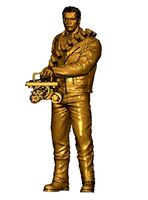
t-800
...t-800
3dexport
t-800
3d_export
$27

BOEING 787-800
...boeing 787-800
3dexport
boeing 787-800
3d_export
$17

Boeing 737-800
...boeing 737-800
3dexport
boeing 737-800
3ddd
free

Pregno 800 parete
...pregno 800 parete
3ddd
pregno , parete
pregno 800 parete
turbosquid
$12

Chair 800'
...alty free 3d model chair 800' for download as obj and c4d on turbosquid: 3d models for games, architecture, videos. (1314033)
3ddd
$1

Medea art 800
... ар-нуво , модерн , подставка
medea art 800
3ddd
$1

OPULANCE 800 Console
...sole
3ddd
opulance , rak
умывальник opulance 800 console
производитель rak ceramics, оаэ
3d_export
$50

B737 800 3D Model
...0 737 800 b737 airlines plane airplane aircraft airliner commercial passenger jet boeing
b737 800 3d model tartino 13743 3dexport
3ddd
$1

Petracer’s 800 Italiano
... плитка
плитка petracer’s 800 italiano
каталог:http://www.petracer.it/wp-content/uploads/800_italiano.pdf
3ddd
$1

Masiero VE 800 10
...masiero ve 800 10
3ddd
masiero
люстра masiero ve 800 10 серии ottocento
Wing
3ddd
$1

The Wing
...the wing
3ddd
wing , appledesign
the wing seating by appledesignstudio
3d_export
$5

wings
...wings
3dexport
beautiful wings model.
archibase_planet
free

Wing
...wing
archibase planet
wing decoration ornament
wing angel n180215 - 3d model (*.gsm+*.3ds+*.max) for interior 3d visualization.
3ddd
$1

Wing Chair
...wing chair
3ddd
baker , wing
wing chair
3ddd
$1

Диван WING
...диван wing
3ddd
flexform , wing
модель дивана wing
производитель: flexform
3ddd
$1
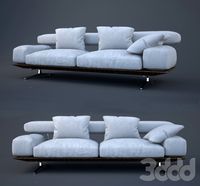
Диван WING
...диван wing
3ddd
flexform , wing
модель дивана wing
производитель: flexform
3ddd
$1

Кушетка WING
...кушетка wing
3ddd
flexform , wing
модель дкушетки wing
производитель: flexform
turbosquid
free

A-Wing
...id
free 3d model a-wing for download as fbx and unitypackage on turbosquid: 3d models for games, architecture, videos. (1164828)
3ddd
$1

Кресло Wing
...кресло wing
3ddd
wing
кресло wing из каталога в двух сочетаниях конфигурации.
3d_export
$5
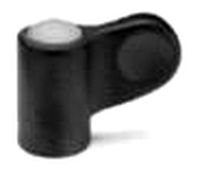
wing nut
...wing nut
3dexport
wing nut
Right
turbosquid
$6

To the right
...squid
royalty free 3d model to the right for download as max on turbosquid: 3d models for games, architecture, videos. (1200265)
turbosquid
$5

Pass Right
... available on turbo squid, the world's leading provider of digital 3d models for visualization, films, television, and games.
3d_export
$14
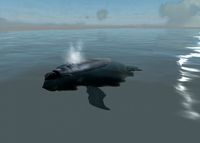
southern right whale
...southern right whale
3dexport
detailed model of southern right whale
3d_export
$10

Tibet right
...tibet right
3dexport
dimensions of the pencil case 404/1982/380 mm
3d_export
free
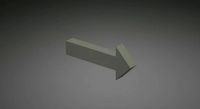
right arrow
...e <br> file contains the <br> and <br> formats.<br>you can use it for presentation slides or 3d printing.
design_connected
$16

Feng Chaise Right
... chaise right
designconnected
ligne roset feng chaise right lounge chairs computer generated 3d model. designed by didier gomez.
3d_export
$5

Right arrow 3D Model
...right arrow 3d model
3dexport
right turn sign signal signage direction
right arrow 3d model ryisnelly100 88745 3dexport
turbosquid
free

Keep Right Sign
...rbosquid
free 3d model keep right sign for download as blend on turbosquid: 3d models for games, architecture, videos. (1522189)
turbosquid
$55

Anatomical right Skeleton
... available on turbo squid, the world's leading provider of digital 3d models for visualization, films, television, and games.
turbosquid
$5

No Right/Left Turn
... available on turbo squid, the world's leading provider of digital 3d models for visualization, films, television, and games.
